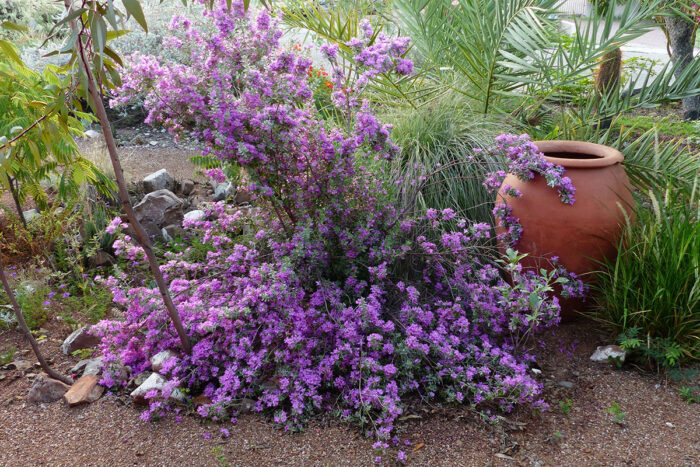
Texas sage is one of the most distinctive native shrubs in the Southwest, blooming periodically throughout the year but dazzling in summer and fall.
Purple is for everyone, and especially those in the brilliant world of the Desert Southwest. Pastel colors may bleach out in our intense sun, but not purple. This is a color with truly no limits. It also pairs well with everything, from silver and white, to hot coral and solar-flare yellow. I have a long list of favorite plants with purple flowers, but here are a few I won’t live without.
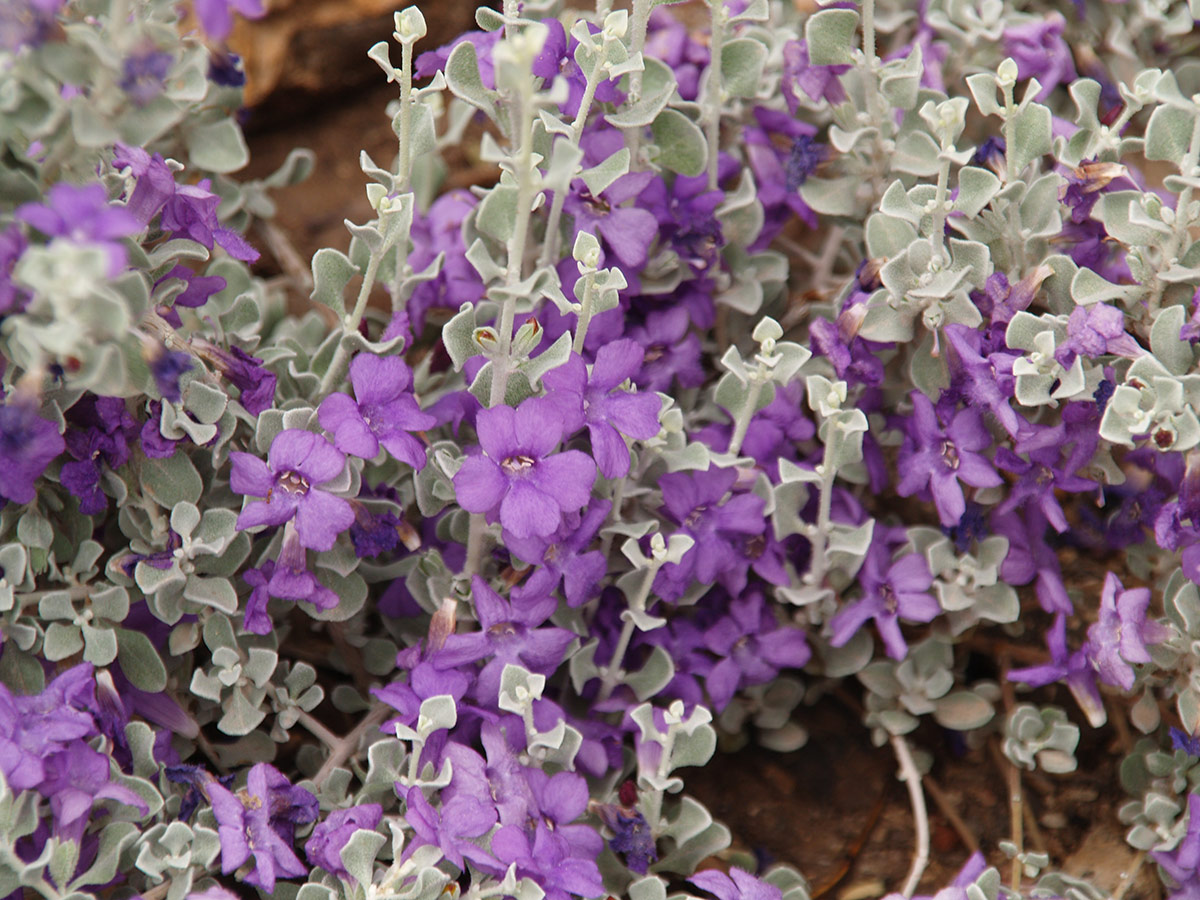
‘Thunder Cloud’ Texas sage
Leucophyllum candidum ‘Thunder Cloud’, Zones 8–11
A host of common names are used for this shrub, including cenizo, Texas silverleaf, and Texas ranger. Whatever you call it, it’s capable of stopping traffic during summer monsoon season, bursting into bloom within days of a good shower and higher humidity. Flower colors of this species can range from hot pink to purple, with ‘Thunder Cloud’ having the deepest purple flowers, set off by bright silver foliage. At a mature size of 3 feet tall and 3 feet wide, there is room in most warm gardens for at least one of these native shrubs.
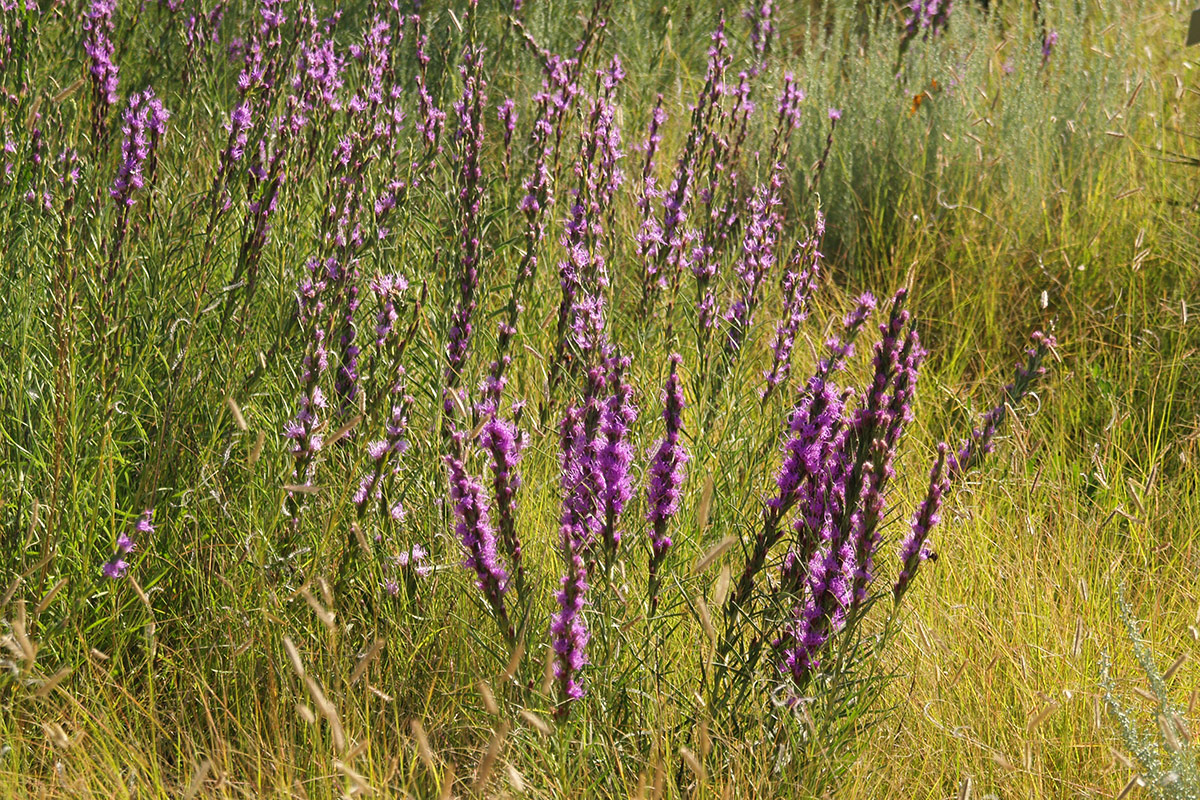
Dotted blazing star
Liatris punctata, Zones 4–9
This is a tough prairie native with a wide distribution among the western plains and mountains. A deep taproot ensures drought tolerance in this long-lived perennial. At just 18 inches tall, its fluffy midsummer spikes of purple attract pollinators when it’s planted in full sun. Its taller relative, Rocky Mountain gayfeather (Liatris ligulistylis, Zones 3–8), appreciates more water and reaches up to 5 feet tall, never failing to attract monarch butterflies to my garden.

Siberian statice
Limonium gmelinii, Zones 5–9
Few drought-tolerant perennials shine in the midsummer garden with deeply purple flowers the way this statice does. It features flat, leathery rosettes of nearly evergreen leaves. Wiry, branched stems bathe the garden with frothy clouds of deep lavender purple in summer. Reaching 18 to 24 inches tall, this plant is the perfect filler between summer grasses, salvias, agastaches (Agastache spp. and cvs., Zones 4–11), and sculptural accents like yuccas (Yucca spp. and cvs., Zones 4–11) and agaves (Agave spp. and cvs., Zones 5–11). In milder zones, the more tender Perez’s sea lavender (Limonium perezii, Zones 9–11) can provide the same effect. Siberian statice also works well in containers.
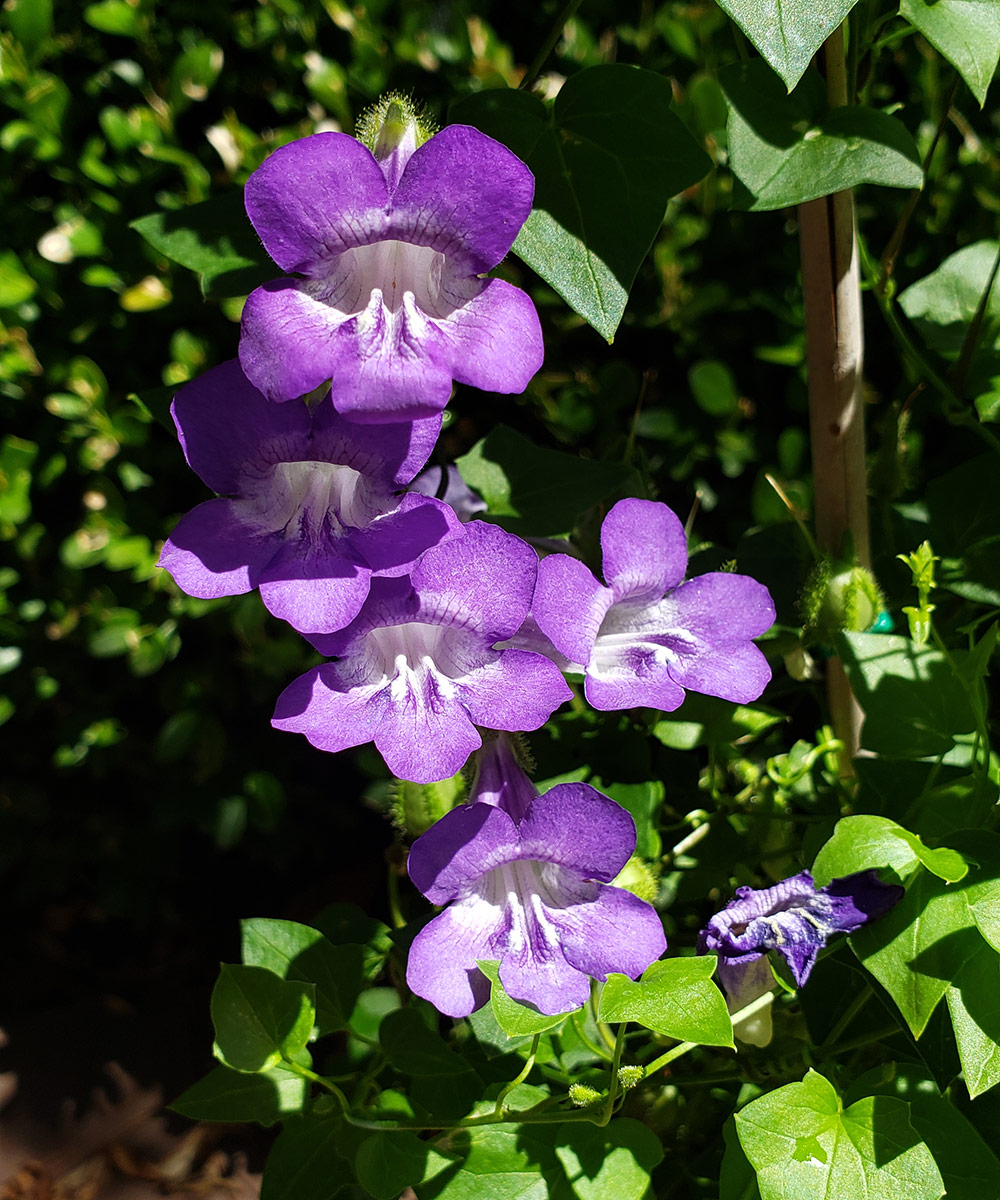
Snapdragon vine
Maurandya antirrhiniflora syn. Maurandella antirrhiniflora, Zones 8–10
The delicate-looking snapdragon vine is surprisingly tough and is native to the shrublands and canyons of the Southwest. Reaching up to 4 to 5 feet tall with small triangular leaves, it will scramble over nearby shrubs or twine up small trellises with ease in sun or partial shade. In my experience, snapdragon vines with red to coral forms seem the most common, making the purple selection ‘Bluebird’ (Maurandya antirrhiniflora subsp. antirrhiniflora ‘Bluebird’, Zones 8–10) extra special.
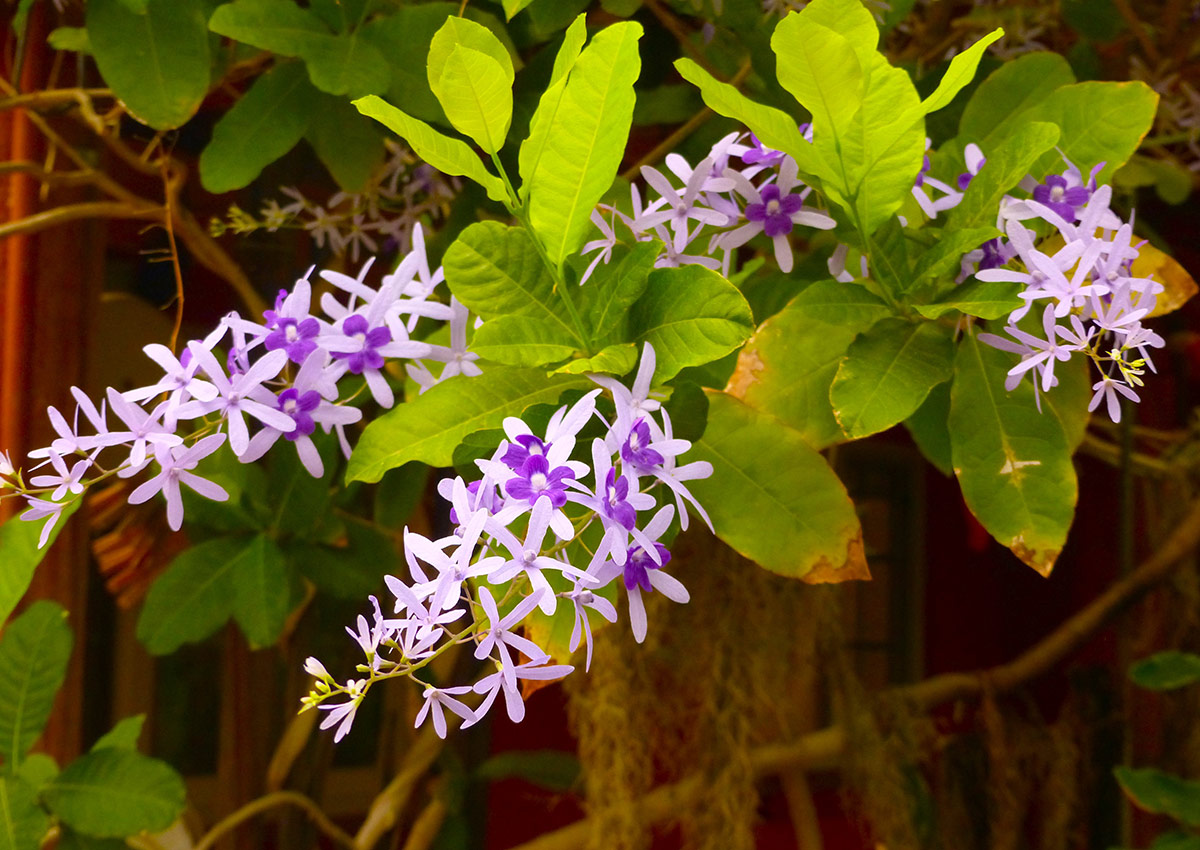
Queen’s wreath
Petrea volubilis, Zones 9b–11
This vine is also called sandpaper vine, which sounds a bit underwhelming but refers only to the rough texture of its leaves. “Queen’s wreath” comes a bit closer to capturing its elegant appearance when it’s draped in long panicles of two-toned purple blooms. As a bonus, spent flowers fall with an entertaining spin. Grow this vine near a sturdy support that it can twine around, and expect heights of 20 feet or more, although a smaller size can be managed with some routine pruning. In Zone 9, plant it in a sheltered but sunny spot, and have a plan to protect it during the coldest temperatures.

Mexican petunia
Ruellia simplex, Zones 8–11
Mexican petunia is a mainstay in low desert gardens, but its value reaches far beyond, as it’s even used as an annual in cold climates. Supremely adaptable, it can tolerate punishing heat and drought, but it is also used in aquatic gardens! Large blooms of the richest purple glow against the dark foliage, with new blooms opening every day, all summer. Additionally, this perennial can recover quickly from a cold snap once warmer weather returns. Mexican petunia is considered invasive in some parts of the American South but is not considered invasive in the Southwest.
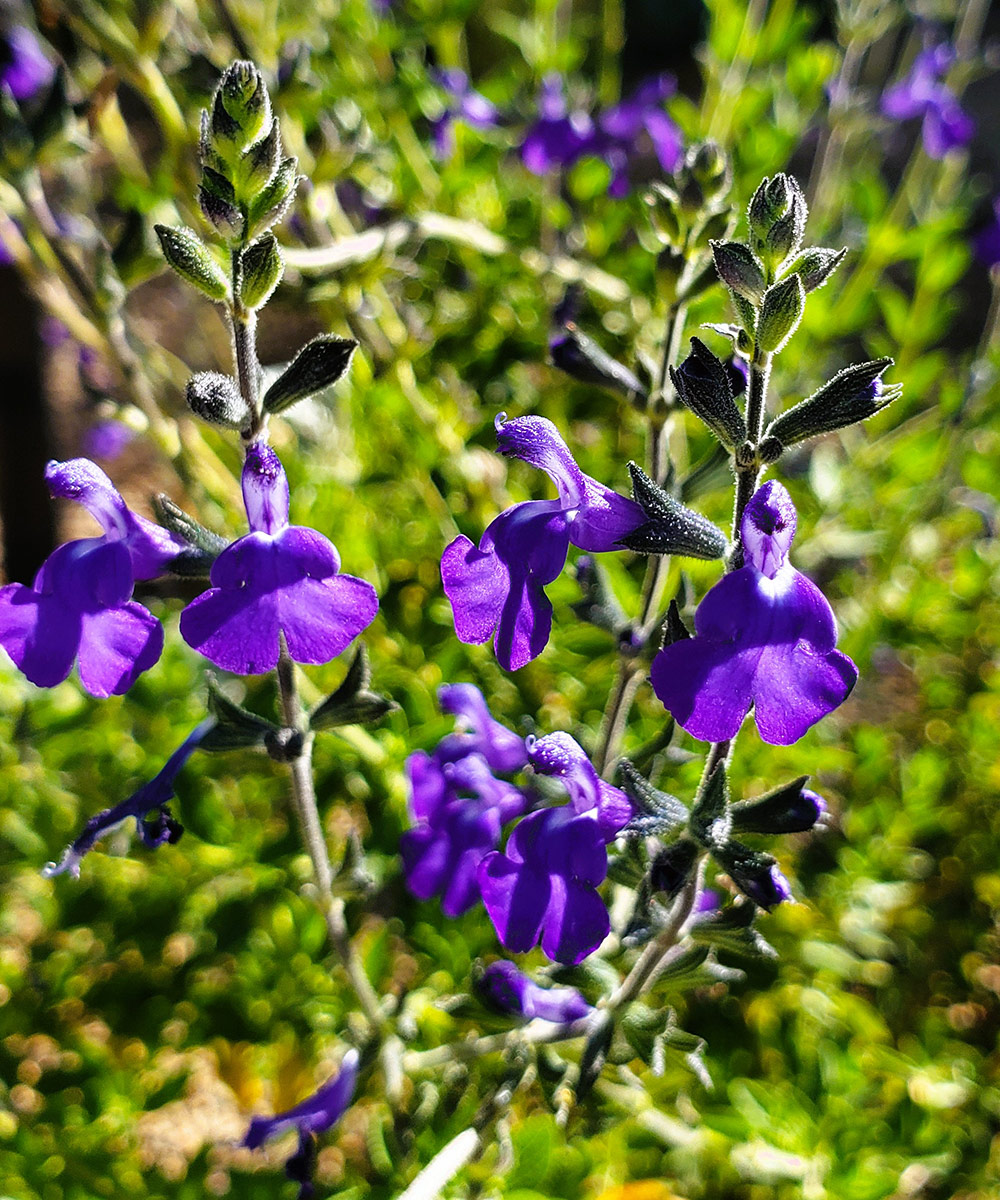
Salvia
Salvia spp. and cvs., Zones 5–11
Hundreds of species and hybrids of salvia abound, but here are a few that prefer our drier western gardens. Coahuila sage (Salvia coahuilensis, Zones 8–11) is a fine-leaved shrub that grows 18 inches tall and boasts small electric blue-purple blooms over a long growing season. It can spread slowly and appreciates an occasional watering. The similar royal purple autumn sage (Salvia muelleri, Zones 7–11) has a deeper purple coloring to its flowers, and both species are reminiscent of the related autumn sage (Salvia greggii, Zones 7–9). Many excellent cultivars of salvia abound, but for sheer flower power, Mirage™ Deep Purple autumn sage (Salvia greggii ‘Balmirdepur’, Zones 7–9) is among the best.
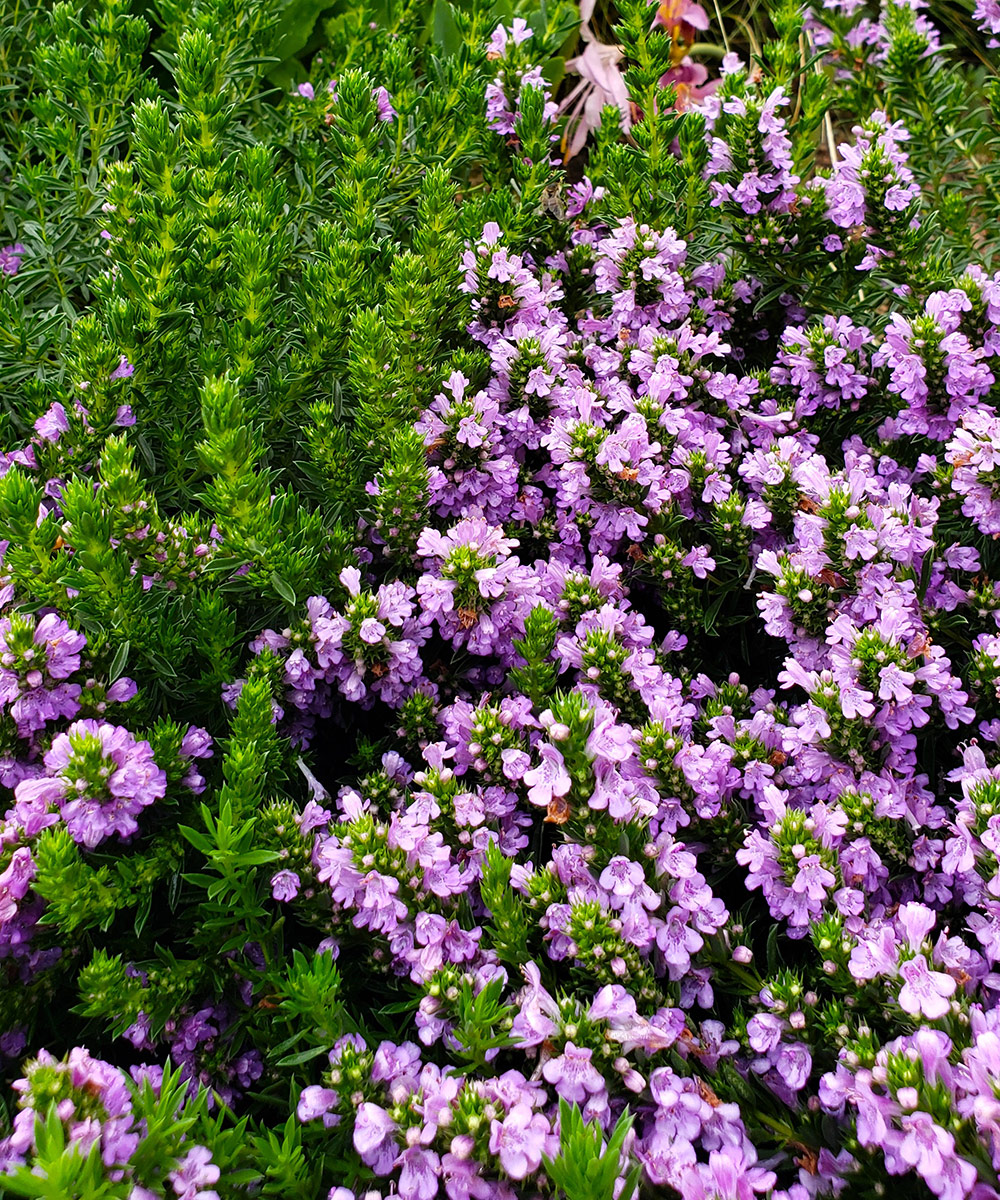
Purple winter savory
Satureja montana subsp. illyrica, Zones 3b–9
Though not suited to the hottest low desert locations, this subspecies of winter savory is an underused gem of a plant. A tightly mounding shrub, reaching just 6 to 8 inches tall and 12 inches wide, it has tiny aromatic leaves of crisp green. This foliage is obscured in mid to late summer by a dome of bright purple blooms. Provide good drainage, occasional water, and full sun in all but the hottest settings. Its occasional volunteer seedlings have been welcome in my garden as they find their favorite niches.
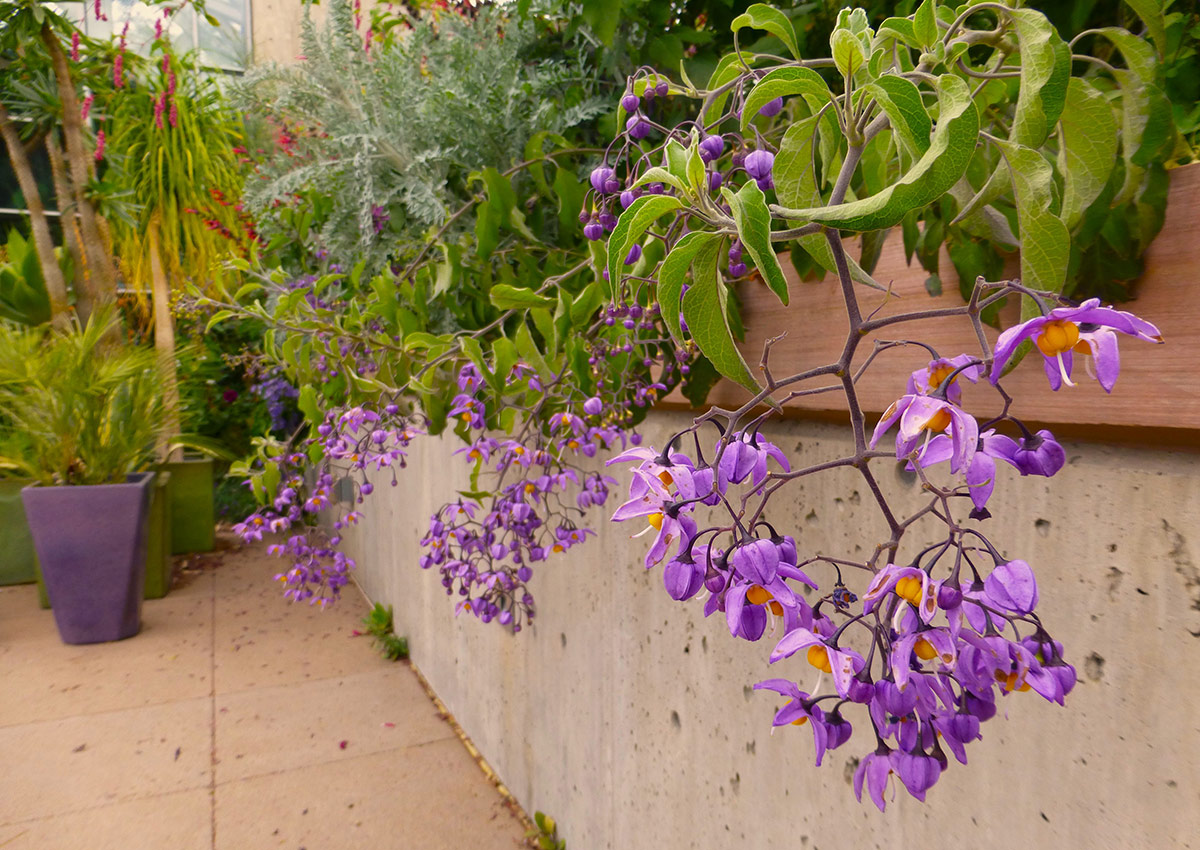
Solanum
Solanum valerianum, Zones 9b–11
There are many solanums native to the Southwest and throughout the Americas. Some are roadside weeds or wildflowers, and others are exotic tropical vines. This species deserves the latter designation. From the Mexican state of Jalisco, this vine scrambles over adjacent shrubs and cascades over cliffs. It does not twine, so it needs to be guided initially. The leaves, which grow on vigorous stems, have clasping petioles that will wrap securely around anything smaller than a finger. This enables its onward progression. By mid to late summer, branch tips become laden with purple, star-shaped flowers that grow in grapelike clusters, each crowned with a center of gold anthers. Hard frost may damage it, but recovery is quick. This vine also grows well as an annual in colder zones.
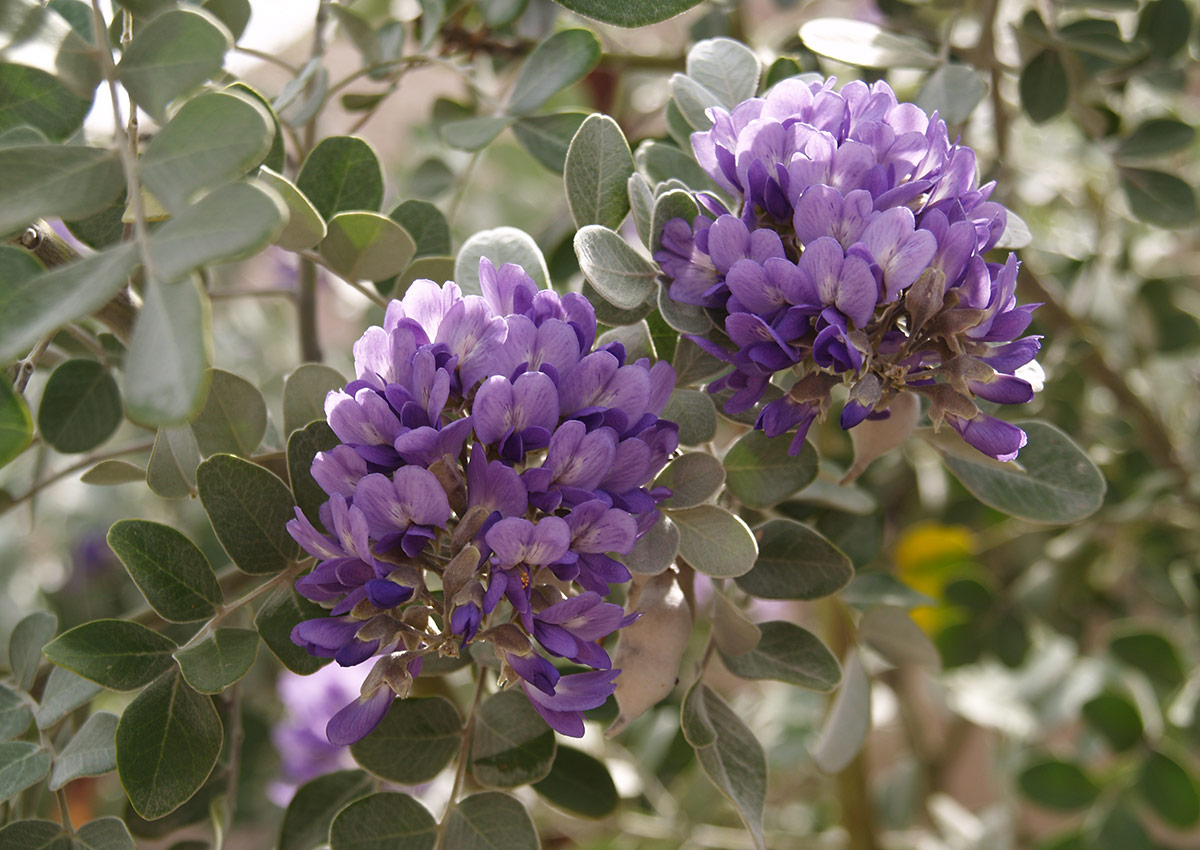
Texas mountain laurel
Sophora secundiflora, Zones 7–11
This small native tree needs little introduction to most folks in the Southwest, but it’s abundant for good reason. Its durability, drought resistance, compact stature, glossy evergreen leaves, and fragrant flowers all justify its place in the garden. Smelling the sweet grape scent of its wisteria-like flowers is a rite of spring in my Tucson garden, made even sweeter when the hummingbirds choose to nest among its sturdy branches. The cultivar ‘Silver Peso’ (Sophoroa secundiflora ‘Silver Peso’, Zones 7–11) is worth consideration for its cool silvery leaves.

‘Hidcote’ English lavender
Lavandula angustifolia ‘Hidcote’, Zones 5–9
There are dozens of lavender cultivars, but ‘Hidcote’ is one of the most adaptable. Drought tolerant and fragrant, it reblooms well when deadheaded. Prolonged heat may restrict its use in the hottest low elevations, but it’s worth a try if you have a special spot for it. Or you can opt for Spanish lavender (Lavandula stoechas, Zones 7–10), which generally has lighter rosy-purple flowers, but a bit more heat tolerance.
All of these purple-flowered perennials, trees, and shrubs perform well in the Southwest and will provide you with bountiful displays of blooms.
For more Southwest regional reports, click here.
—Dan Johnson lives and gardens in Denver and in Tucson, Arizona. He is an associate director of horticulture for the Denver Botanic Gardens.
Photos, except where noted: Dan Johnson




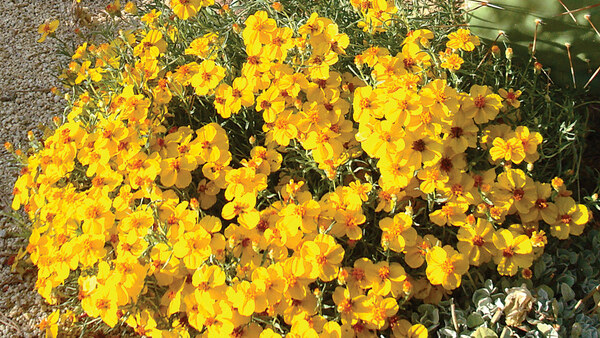
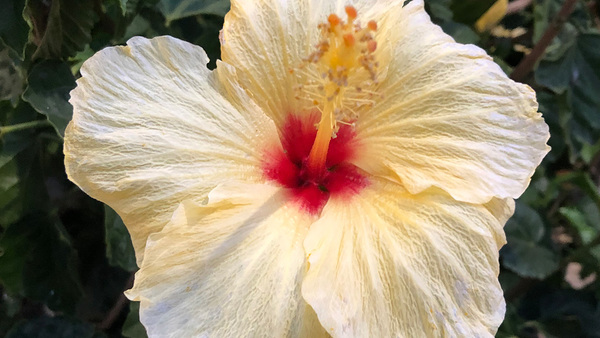












Comments
Log in or create an account to post a comment.
Sign up Log in